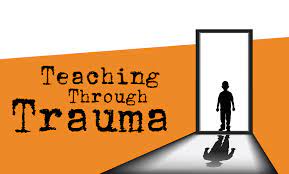Introduction
It is no secret that trauma can have lasting impacts on a person’s life, especially when it comes to learning and education. Traditional teaching methods may not be effective or appropriate for students who are dealing with the aftermath of traumatic experiences. In response to this issue, many educators are adopting a new approach to education called Teaching Through Trauma. This article aims to explore the concept of Teaching Through Trauma and its benefits for both students and teachers.
What is Teaching Through Trauma?
Teaching Through Trauma is an educational approach that focuses on understanding, recognizing, and addressing the impacts of trauma on students’ learning abilities and emotional well-being. This method centers around fostering a safe, supportive, and nurturing learning environment that caters to the unique needs of traumatized students. It involves a shift in teaching strategies and a focus on trauma-informed practices that cater to the diverse needs of all students.
The Importance of Teaching Through Trauma
1. Improved Learning Outcomes
Traumatized students often struggle with traditional classroom settings due to heightened anxiety, depression, difficulty concentrating, and other issues related to their past experiences. By adopting a trauma-informed approach to education, teachers can better understand these challenges and implement targeted strategies to address them. This could lead to improved learning outcomes for affected students.
2. Emotional Support
A primary aim of Teaching Through Trauma is providing emotional support for affected students in the classroom. Teachers who practice this method work towards establishing relationships based on trust and empathy with their students. This support network not only aids in healing but also helps build self-esteem and confidence in traumatized students.
3. Reducing School Dropouts
Trauma can often result in reduced school engagement for affected students, sometimes leading them to drop out altogether. A trauma-sensitive approach encourages these students to stay engaged in school by providing them with an environment that prioritizes safety, empathy, and support.
4. Preventing Re-Traumatization
Traditional disciplinary methods, such as exclusionary practices, can potentially re-traumatize students with a history of traumatic experiences. Teaching Through Trauma strives to prevent re-traumatization by adopting more restorative and inclusive disciplinary approaches.
5. Empowering Teachers
By embracing a trauma-informed educational approach, teachers can gain knowledge and skills that enable them to better navigate the unique challenges that come with working alongside traumatized students. This increased understanding and skillset can empower teachers in their daily practice and enhance their overall job satisfaction.
Conclusion
Teaching Through Trauma represents a significant paradigm shift in the world of education, one that seeks to create supportive, nurturing, and safe environments for all students – particularly those grappling with the aftermath of traumatic experiences. By understanding the importance of trauma-informed practice and implementing it within our classrooms, we can foster an educational system that acknowledges the unique challenges faced by affected students while promoting healing and better learning outcomes for all involved.





